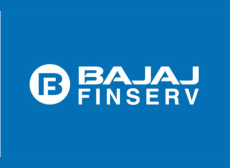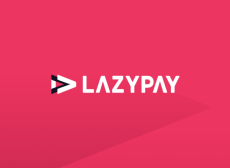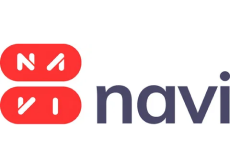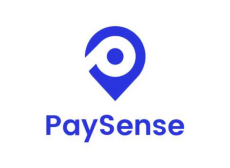NBFCs and banks provide gold loans
In the Indian gold loan market, banks and NBFCs offer loans against gold. Aside from the fact that gold is a highly liquid asset, there is an emotional link with gold jewellery and ornaments. It is an important part of the Indian culture and people rely on it in times of crises.
The demand for gold loans in India has increased over the years. With the rise in prices of 24-carat gold, more small businesses are seeking to finance their operations through gold loans. Banks and NBFCs offer these loans at competitive interest rates. However, it is important to compare the terms and conditions of different gold loan offers before taking out a loan.
Most banks and NBFCs offer loans with no prepayment penalty. Typically, they send reminders after six months. Some lenders, however, charge a prepayment fee which can be added to the loan amount.
The main difference between gold loans and other secured loans is the fact that gold is considered as collateral. This allows the lender to sell the pledged gold if the borrower defaults. If the gold is worth more than the loan amount, the borrower gets a higher loan amount. Moreover, the borrower is able to take back the gold immediately.
While banks have a strong foothold in the gold loan market, NBFCs have been slowly gaining ground. These specialized financial institutions are attempting to break the monopoly of gold loan companies. They are also offering loans at attractive rates and a hassle-free process.
Gold loans are used to fund small business operations and provide quick cash to individuals. Moreover, these loans have lower interest rates and faster processing time than other forms of secured loans. To get the loan, you have to visit the bank branch or NBFC office.
While banks typically charge a 1-2 per cent processing fee on the value of the loan, NBFCs do not charge anything. In addition, these companies do not require borrowers to deposit money in their accounts. Moreover, if you wish to repay the interest during the loan tenure, you can do so easily at the NBFC’s branch. Similarly, the documentation is easier and simpler with NBFCs.
Banks and NBFCs compete on service. Some NBFCs also offer interest-only options for the gold loan. Depending on the borrower’s ability to repay, they may ask you to make fixed monthly instalments. Alternatively, they can ask you to pay the principal at the end of the loan term.
Banks and NBFCs have a wide array of borrowing options, including low-cost short-term deposits. But, some of these loans carry a high prepayment penalty. For example, HDFC Bank charges 1.5 per cent of the loan amount. Another NBFC, Muthoot Fincorp, doesn’t have any such prepayment penalty.
The latest entrant into the gold loan market is Mumbai-based financier Capri Global. The company plans to tap the northern and western regions of India. It has over 100 branches in Madhya Pradesh, Gujarat, Delhi-NCR and Rajasthan.
Online application procedure
When looking for gold loans in India, it is important to note that there are a variety of lenders. There are also a variety of eligibility requirements. To get the best deal, you need to compare lenders’ interest rates and other terms. Some lenders do not charge prepayment charges, and others will allow you to make regular EMIs, reducing the overall cost of your loan.
You can apply for gold loans online. The process is simple. In the beginning, you’ll be asked to fill out a Basic Details form. After this, you’ll receive an OTP, which will allow you to access your lender’s website. This will then display a page that details your account, the total amount you owe, and a list of payment options.
The page also lists a variety of benefits you’ll receive as a borrower. One of the most important is the security that you’ll receive. Gold loan companies will often offer insurance policies that cover the financial costs of losing or damaging your yellow metal. They may also offer an emergency fund, so you’ll be prepared for whatever happens.
Gold loan providers will often make use of an online calculator to figure out your estimated loan amount. However, you’ll have to meet their eligibility requirements. Once you’ve determined how much you can borrow, it’s time to fill out the actual application. Before you submit your loan, you’ll need to verify your identity. For this, you’ll need to carry some basic documents, such as your Aadhaar card and PAN card.
While you’re at it, you’ll need to calculate how much your gold is worth. Lenders will typically ask you to weigh your jewellery and ornaments to ascertain their weight and purity. High purity leads to a higher weight and thus a larger loan.
You’ll also want to pay off your gold loan on time, or you might find your credit score taking a beating. Borrowers who make their EMIs on time can expect to see a boost in their CIBIL score, which in turn can make it easier for them to obtain loans in the future.
There are dozens of lenders offering gold loans. The only trick is to find one that has the lowest rate of interest. Compare interest rates and other terms before you apply. If you’re able to choose a reputable lender with no hidden charges, you’ll be in the clear.
Finally, you’ll need to decide on the best way to repay your loan. Online is an option, but some lenders do require that you go into their branch to fulfill the repayment requirement. Other options include UPI (which stands for “ultimate Payment Interface”) and RTGS (remote transfer system).
By now you should have an idea of how to apply for a gold loan. But if you’re still not sure, you can always call up your lender for more information.
Disadvantages of a gold loan
A gold loan is one of the most convenient and fastest ways to raise cash for emergency purposes. This secured loan is issued against the current market value of your gold. While there are many advantages to this kind of loan, there are also some drawbacks. Those who are in the market for a loan should make a point to know what their options are before signing any paperwork.
A gold loan is easy to apply for and disburse. The application process is divided into four stages. First, the applicant must submit gold as collateral. Next, they must provide some basic personal information. Finally, they have to undergo a rigorous evaluation to determine the best possible loan amount.
For the most part, the loan is paid off over a period of time through set EMIs. However, some companies offer flexible repayment terms. There are even some NBFCs that allow early repayment without penalties.
A gold loan is not for everyone. People with bad credit and low income might find it difficult to qualify. Similarly, borrowers might not be able to pay off the full gold loan amount in a short span of time. In such a situation, debt settlement might be a better option. Another alternative is to borrow against your existing jewellery. However, be warned that you may lose the gold if you are unable to repay the loan.
As far as interest rates go, a gold loan isn’t the most competitive. A personal loan can be more lucrative, especially if you need a large sum. Some lenders might charge a higher interest rate than they would on a personal loan. However, they are more likely to offer you a longer repayment duration.
Another disadvantage of a gold loan is that it typically has a short tenure. The usual length of a gold loan is a year. However, you can extend the loan as often as you like. But, a lender might levy a pre-instalment penalty.
While there are many gold loan products out there, it’s always smart to shop around and compare offerings. Check for features such as a lenient LTV ratio, an EMI repayment scheme and a flexible payment plan. Be sure to read the fine print so that you can choose the loan that’s right for you.
Whether you are in need of a quick cash infusion or are just in the market for a new piece of jewelry, a gold loan might be just the ticket. It has the convenience of an unsecured loan with the added benefit of less stringent requirements. Plus, you can use the loan to pay off other expenses or invest in a new home. Depending on your needs, you might be able to get a gold loan in a matter of hours.












